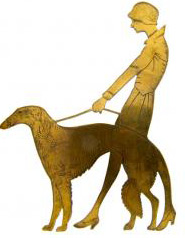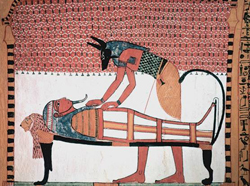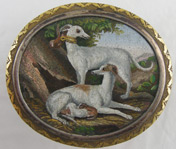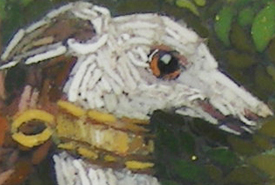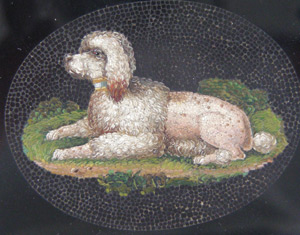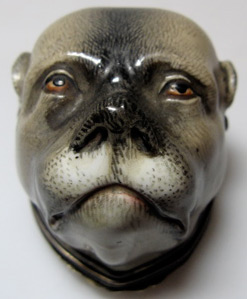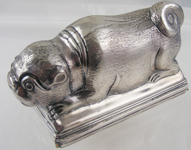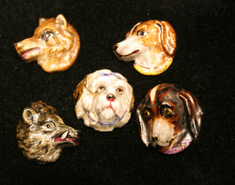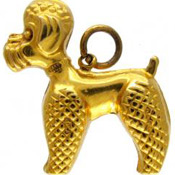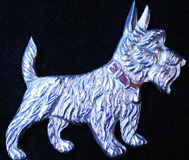Let me nail my colours to the mast – I am a cat person. I like my dogs to be in art – preferably in jewellery. However, as it is Crufts soon, this is my homage to dogs.
Dogs have been domesticated for more than 15,000 years. With this has come a broad symbolism. For the Ancient Egyptians and Greeks, dogs had links to the underworld. One of the most iconic images of early dog art must surely be the jackal head of the god Anubis in ancient Egyptian funeral scenes. Anubis, the god of mummification, assisted in the rites by which a dead man was admitted to the underworld.
The Greeks had a three headed dog – Cerebus, who guarded the entrance to the underworld, allowing souls in, but not back. Neither images were seen much in jewellery. The main images that have been portrayed in Western art, highlight symbols that are recognisable today such as dogs’ faithfulness, companionship and of course, their hunting skills. Many of these images were translated into what could be called ‘male’ jewellery and accoutrements such as seals, tie/stick pins or snuff boxes. The jewellery depicting dogs which was made for women tended to be much more frivolous.
This beautiful greyhound family made in 1800 looks as if it had been painted – in fact
it is made of of tiny mosaic pieces so small that they are called micromosaic. This became particularly popular in Italy between 17th and 19th centuries when many of these mosaics were favourite mementos with those on the Grand Tour. It might well have been bought already made up into a brooch, as here or bought as a small tablet as with the poodle, ready to be slotted into a box top or framed, back in England.
This delightful micromosaic poodle was made around 1840 in Italy. The poodle is
beautifully executed – it looks so lifelike that at any moment I expect him to get up, give himself a shake and run off. What I find amazing is that this style of clipping poodles was obviously fashionable 180 years ago. Poodles may well have originated as gun dogs but these fancy clipping styles made them almost cheeky targets for jewellery images.
Away from the hint of sweetness, these two silver 18th and 19th century pug snuff boxes wonderfully capture the solidity of pugs.
Another jewellery medium for portraying animals was enamelling. Like the micromosaic it could be beautifully made and very realistic. These four dogs and one boar epitomise the
skill that went into rather modest pieces. These five, are enamelled on copper and are hollow backed. They were made around 1900, and are still waiting to be made into brooches or stick pins.
Looking at these reminds me of when years ago I bought a collection of 40 enamelled dog brooches. They were beautiful and almost photographic in detail. They were, though, an absolute nightmare to sell. Customers would come, see the dog that they thought was exactly like their dog. But on closer inspection it wasn’t. Their pet had a white patch on its ear or longer legs or more spots and then a conversation would begin that could go on for hours about how if my dog were more like their dog, then they would buy the brooch but it was such a pity that it wasn’t and didn’t I really have a brooch of their dog with longer legs under the stand? In the end I took them out of the showcase, gave them to someone else to sell and swore never to buy anything that could remotely resemble someone’s pet.
A few more frivolous examples of dogs in jewellery.
